Why It Took Pamela Isley, Poison Ivy So Long To Get Recognized By DC
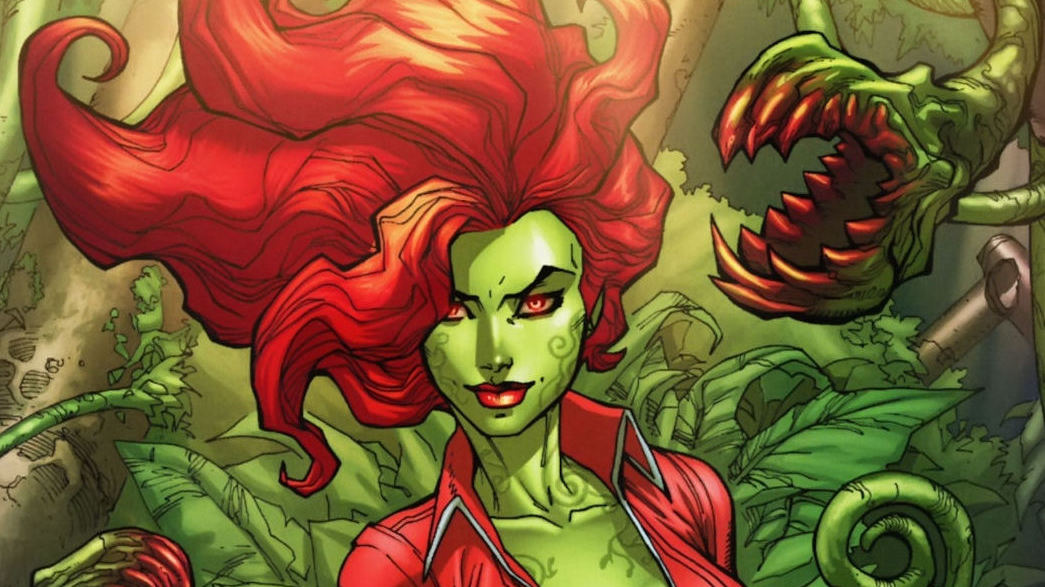
Join the community on Reddit for the latest Marvel & DC news!
A few weeks back I did an article about one of my favorite Batman enemies, Ra’s al Ghul. The character, since his first appearance, has made a name for himself as arguably Batman’s greatest enemy. Of all Batman’s enemies, Ra’s al Ghul is his equal. This is so much that Ra’s even sees Batman as his successor. Ra’s is wealthy, proficient in combat, and extremely intelligent…all characteristics Batman is known for.
As a villain, what separates him from so many of Batman’s other enemies is that his evil, if I can call it that, is rooted in the fact that he only wants what’s best for the environment. After centuries of existing, he has watched countless wars and human corruption destroy the world he loves so much. Basically, he wants a better world, but to do that means that he must tear the current one apart. This, of course, means wiping out humanity.
While I don’t agree with his methods, I do agree that something needs to be done. The world is at a tipping point and it’s only a matter of time until it falls over.
Like Ra’s al Ghul, Pamela Isley or Poison Ivy also roots herself in environmentalism.
First appearing in Batman #181 back in June of 1966, Pamela Isley, Poison Ivy is one of Batman’s more fascinating enemies. Not only has she become a fan favorite character in comics, but she has also made multiple on-screen appearances over the years
- Uma Thurman in Batman and Robin
- Clare Foley in Gotham
- Piera Coppola in The Animated Series
- Tasia Valenza in the Arkham games
Poison Ivy is different from many other enemies in Batman’s
Let me explain.
At her core, Pamela Isley wants what’s best for the world around her. She, as her name suggests, is a character obsessed with the conservation and protection of the environment. No different than Ra’s al Ghul, she is an Eco-Terrorist.
But before we jump into the intricacies of the character…
Poison Ivy, Palmela Isley, was a Gotham City Botanist, who, after being injected with toxins, became Poison Ivy. Of course, if that seems like a lacklust
After the DC-wide change that was Crisis on Infinite Earths, Pamela Isley’s story was retconned. This meant that her story (origin and everything else), as it was known, was changed to better serve the writers who were writing her.
In the events that followed Crisis on Infinite Earths, Palmela Isley was a botanist, who grew up at the side of wealthy parents. As good as it may seem to grow up wealthy, understand that her parents were not emotionally connected to her. Instead, they kept their distance from their child and Pamela was forced to fend for herself.
Eventually, after achieving grades good enough for Post Secondary Education, Pamela enrolled in University. While at University, she decided to study advanced botanical biochemistry alongside Alec Holland and under Dr. Jason Woodrue. Not yet the confident villain she’d eventually become, Pamela is easily seduced by Woodrue. Under his seduction, he injects Pamela with a toxin that, although causes a transformation, nearly kills her. As a result of nearly dying, Pamela is driven insane and begins to suffer violent mood swings. This meant that at one moment she could be perfectly happy and the very next, filled with immense rage.
Shortly after her boyfriend, due to a mysterious fungal overgrowth, was in a car accident, Pamela left her home and made her way to Gotham. Once in Gotham, she turned to a life filled with crime and an infatuation with Batman. And if you’re wondering, why Batman? Batman became an obsession of Pamela Isley because he was the only man able to resist her control.
This kiss, the mark of Poison Ivy, would do a lot to define the character over the next many decades.
Poison Ivy is an anomaly in the Batman world. She, for the better part of her existence, hasn’t had a clear direction. When we first met her she was no different than most villains. She came up with plots to take over Gotham and preserve the environment while doing it. If this sounds like the making of a boring character to you, you’re right. Her character history, arc’s, and reasons for being
As comics matured, however, so too did Poison Ivy.
With the content changeover, Pamela Isley suddenly found herself caught somewhere between sex symbol, a champion of feminism and environmentalism, and boring Silver Age character with an unexciting history. As Bob Dylan famously said, “The times they are a-
Try as they may, Ivy became a character that the reader couldn’t ignore anymore. She had unearthed a way to captivate the female audience and keep the collective imagination of boys and men running wild with desire. For the first time in her history, she mattered. As a result, her popularity began to soar.
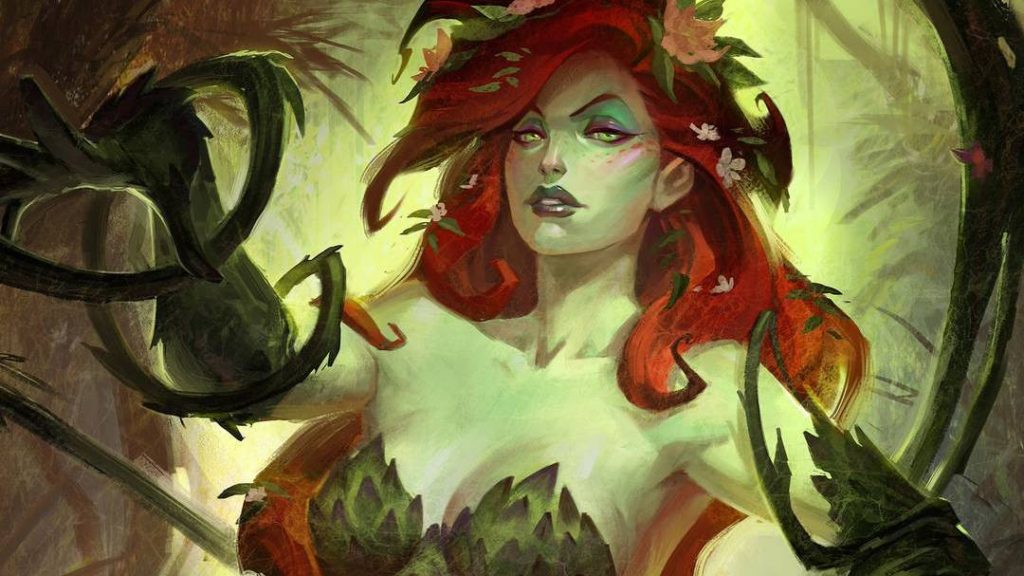
The problem was that due to so many writers and illustrators, she never really had a cohesive direction. Nobody knew or understood what to do with her. I don’t want to say that DC didn’t know what they had with her because they probably did. The company just didn’t know how to approach it.
At any given time, Ivy had suffered from any one of:
- PTSD
- Her environmental infatuation
- Greed
- Guilt
- Dissociative Identity Disorder
- Poor writing
And this was a problem.
As great as she is now, she could’ve been great a long time ago had DC understood what to do with her. Most good characters are built around a singular premise that is expanded upon. Darkseid was built around a dictatorship mindset. Warlock was built around questioning organized religion. Catwoman was built around her Robin Hood-type tendencies. Moon Knight was built around Dissociative Identity Disorder. And Poison Ivy, well, at the time, nobody really knew. Ivy had all the qualities in place to be a great enemy but DC didn’t know how to coherently put it on paper.
It didn’t help that she was conflicted on every imaginable level. She wants good but the methods she uses are anything but. She’s neither a hero or a villain but instead, everything in between. She makes the reader question their everyday beliefs but doesn’t do it in a way that causes those questions to transform into something special. It’s only now, decades after her initial appearance, that DC is finally figuring out what to do with her.
She, as mentioned, is as important to the environmental movement as Ra’s al Ghul. While many simply see the world on a superficial level, Ivy sees it for what and how it actually is. Poisoned. Through her eyes, we see our own faults. The world around her … the world around you and I, is dying. Ivy knows this and takes drastic measures to see it reversed. As an environmentalist, albeit an extreme one, Ivy isn’t wrong to want what she wants. And what she wants is a future worth living in.
Remember, Poison Ivy is an Eco-Terrorist. If you didn’t catch it on the Ra’s al Ghul article, here’s the definition given by the United States F.B.I., “…the use or threatened use of violence of a criminal nature against innocent victims or property by an environmentally-oriented, subnational group for environmental-political reasons, or aimed at an audience beyond the target, often of a symbolic nature.” Basically, this means that eco-terrorism is pushing an environmentally based political agenda with violence. This very definition describes Ivy perfectly. Hell, even her name screams Eco-Terrorism.
But anybody who has heard of the character knows she’s all about the environment, right? You know that she wants to preserve and care for the environment. You know that she’d rather be in a greenhouse than a city. And you know that she actually means it when she wears green as a symbol of support.
So, I really don’t want to spend too much time talking about her environmental endeavors.
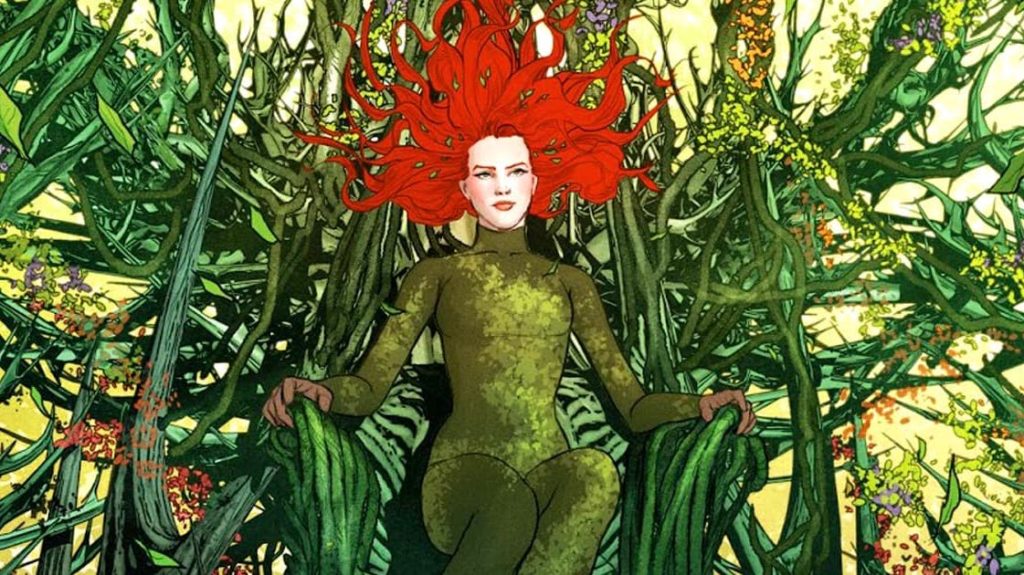
As a character, Poison Ivy represents everything that is associated with feminism. Throughout her history, she has transformed into the living definition of a strong woman. She’s independent, has a mind of her own, reminds you that she doesn’t need a man, and stands up for other women. A simple search through a local comic shop and you’ll exactly what I mean.
Not only does Poison Ivy believe that she is superior to all men, but she also believes that all women are superior to men. I’m not here to comment on either but I will say that she is definitely superior to the men in her life. She has the power to bring any man to their knees with something as simple as a kiss. She can bend the will of any man with the pheromones that she releases. And most impressively, when she’s caught a man, like a Venus Fly Trap, she can keep them for as long as she wishes.
However, what makes Ivy so special is none of what I just said. Instead, what makes Ivy so special is that she empowers other women around her. Point in case, Harley Quinn.
As much potential as she had, Poison Ivy really came into her own in Batman The Animated Series. In the series, there’s an episode that sees her help liberate Harley Quinn from the Joker…who, by the way, is a man…and not just any man. The Joker is a man who beats her down and keeps her a safe distance from independence.
The episode oozes feminism like a volcano oozes lava. It begins with the Joker asking Harley if and when she has ever had a worthwhile idea. This circumstance is no different from the ones we’ve
But I digress.
All wasn’t lost, however. Even though the circumstance was no different, how it played out was.
Seeing what was happening, Poison Ivy comes to her aid and immediately begins to issue her “some lessons in good old female self esteem.” The episode follows them as the two pair up, raid a Men’s club, and blow up a car of ignorant men who called out to them. Sure, the episode could’ve been seen as violent and righting a wrong (how Joker treats Harley) with a wrong (how Poison Ivy and Harley react to it), it wasn’t. Instead, the episode seems to justify their actions.
It doesn’t end there.
Later on, the two capture Batman and tie him up. Understand that Batman being tied up is a direct shot at masculine comics of old. Remember, Wonder Woman spent the first many years of her existence tied up, bound down, and everything in between. After they tie up Batman, a dialogue commences:
Pamela Isley: Here we have the typical male aggressor, fittingly imprisoned within the bonds of female domestic slavery.
Batman: Man or woman, a sick mind is capable of anything.
Pamela Isley: A very enlightened statement, Batman.
This encounter is important for three reasons. First, and as mentioned, Batman is the one who has been caught, bound and not vice versa. Second, and possibly one of the only times in existence, Batman has not only been captured, but he has been captured, tied up, and held hostage by women. Third, the simple act of tying up arguably the greatest hero DC ever created was a metaphor for the traits that would characterize Poison Ivy moving forward.
This moment, if thought about for even half a second, is a landmark moment for Poison Ivy, Batman, Warner Bros., and DC. Here we have Batman, the Dark Knight, the hero and savior of men, captured by two women. Watching Batman capture women had become, up to this point, expected. Batman catches Catwoman. Batman catches Harley Quinn. And Batman catches Poison Ivy. Man subdues woman.
But here…here in this perfectly crafted 22 minutes of storytelling, is the exact opposite. I’d go as far as to say it was the tipping point of change.
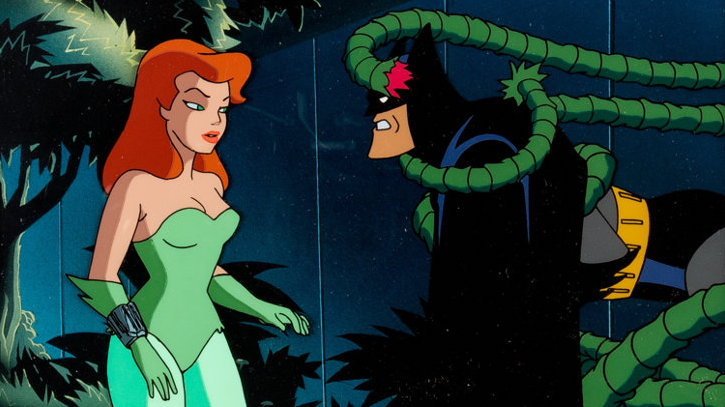
Before the episode ends and just when the viewer thinks that DC can’t drive the feminist point home any further, Ivy speeds away screaming that, “No man can take us
- Strong
- Free-willed
- Independent
- Thoughtful
- A leader
- A champion of hope
- And a bringer of change
She, however, couldn’t have done it alone.
As a duo, Poison Ivy and Harley Quinn are as opposite as they come. While Poison Ivy stands up herself, knows that she doesn’t need a man in her life, and is emotionally stronger then many characters in DC, Harley Quinn, well, isn’t. Harley is dependent on men. She bends to every ask, tell, command, or demand of whichever man is closest to her. It could be the Joker. It could be Deadshot. And it could be Batman. It really doesn’t matter. Harley is programmed to do as men tell her.
Just quickly searching Google I was able to easily find an image demonstrating exactly what I refer to. This particular exchange goes something like this: l
Harley: Oh, Mr. J! You came back to me.
Joker: Yes, but there is something on your face, Harley.
Harley: My face?
Joker: There it is. Here, let me get it off. (Punches her in the face) Got it! I think it was a small touch of hubris. But it’s gone now.
Harley will never be Poison Ivy.
And why?
For as popular as she is, she needs the Joker. Therefore, and tell me if I’m wrong, she needs a man. Poison Ivy does not. Certainly, there’s an argument to be made that he needs her more, but I really don’t think so. Each time he punishes
Think about it.
Harley gave up her career as a psychiatrist, her identity as Harleen Quinzell, and everything about who she was so she could stand behind, or if the moment allows it
Again, it’s this that makes the two such a good pairing. Ivy is the teacher and Harley is the student. But it’s more than that. Not only did the world take notice of their chemistry but DC did too. So, in 2015 the company wrote into their continuity that the two had entered into an open relationship.
It’s abundantly clear that Pamela Isley is the best thing to have ever happened to Harley. After all, she is the only character to A) actually care for her and B) continuously caution her against the Joker. Ivy empowers Harley in a way that just hasn’t been done by anyone else. She pushes her feminist ways on the impressionable Harley but does so in a way that the reader can enjoy.
Together, the duo has helped pushed the boundaries of bisexual acceptability all over comics and the world. Even though the Joker repeatedly shows Harley what it means to be a piece of garbage, Ivy works to show her what a real partner is. She allows her the room required to grow as a person all-the-while pushing Harley to be better than she was yesterday. Poison Ivy believes in Harley in a way that Harley desperately needs. As a couple, the two just fit.
Am I right?
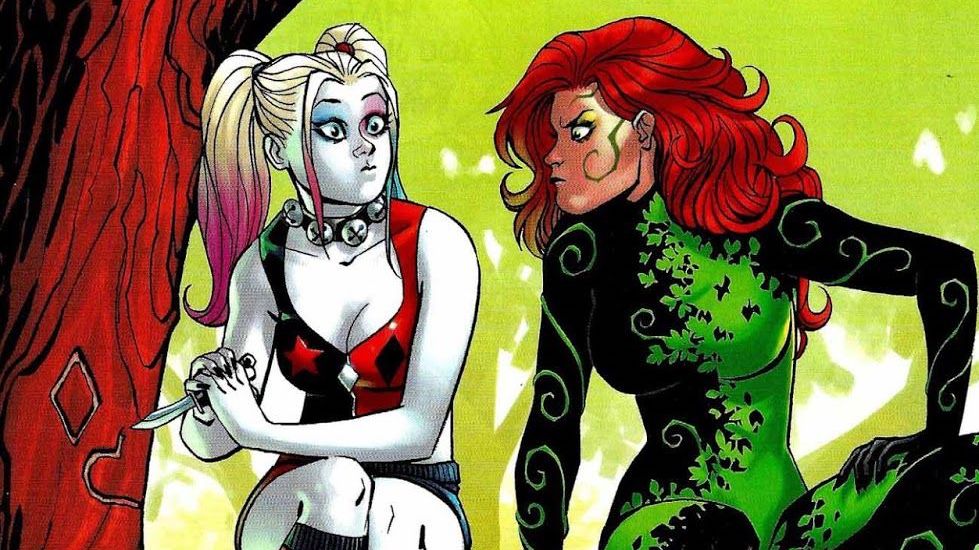
Abraham Reisman, a
And if I’m not right, he’s definitely right. But none of what’s going on in Harley’s life could’ve been possible if not for Pamela Isley. She is the foundation for which change is being built on. I can confidently tell you that she is as important to the Batman myth as Batman.
As a character in comic books, Pamela Isley, Poison Ivy took a long time to develop. Most characters who don’t translate into anything for the first many years simply fizzle out and are never heard from again. Thankfully, DC knew that they had something with Ivy and were patient enough to wait it out. She has transcended the genre in ways that very few characters have.
Unlike Darkseid, Warlock, Catwoman, and Moon Knight who were built around one central theme, Poison Ivy has been built around multiple themes. This nuance to her character has helped her endure during her unpopular times and will continue to keep her in the spotlight for as long as DC is still making comic books. It’s because of Pamela Isley, Poison Ivy, the reader gets a small glimpse and a new way to understand the big world.
I’ve said it many times before and I’ll say it again here. Comic books are the gateway to understanding the world just a little bit better.
So, may they be around forever.
Cheers,
Joel
Liked this article? Join the community on Reddit for the latest Marvel & DC news!

